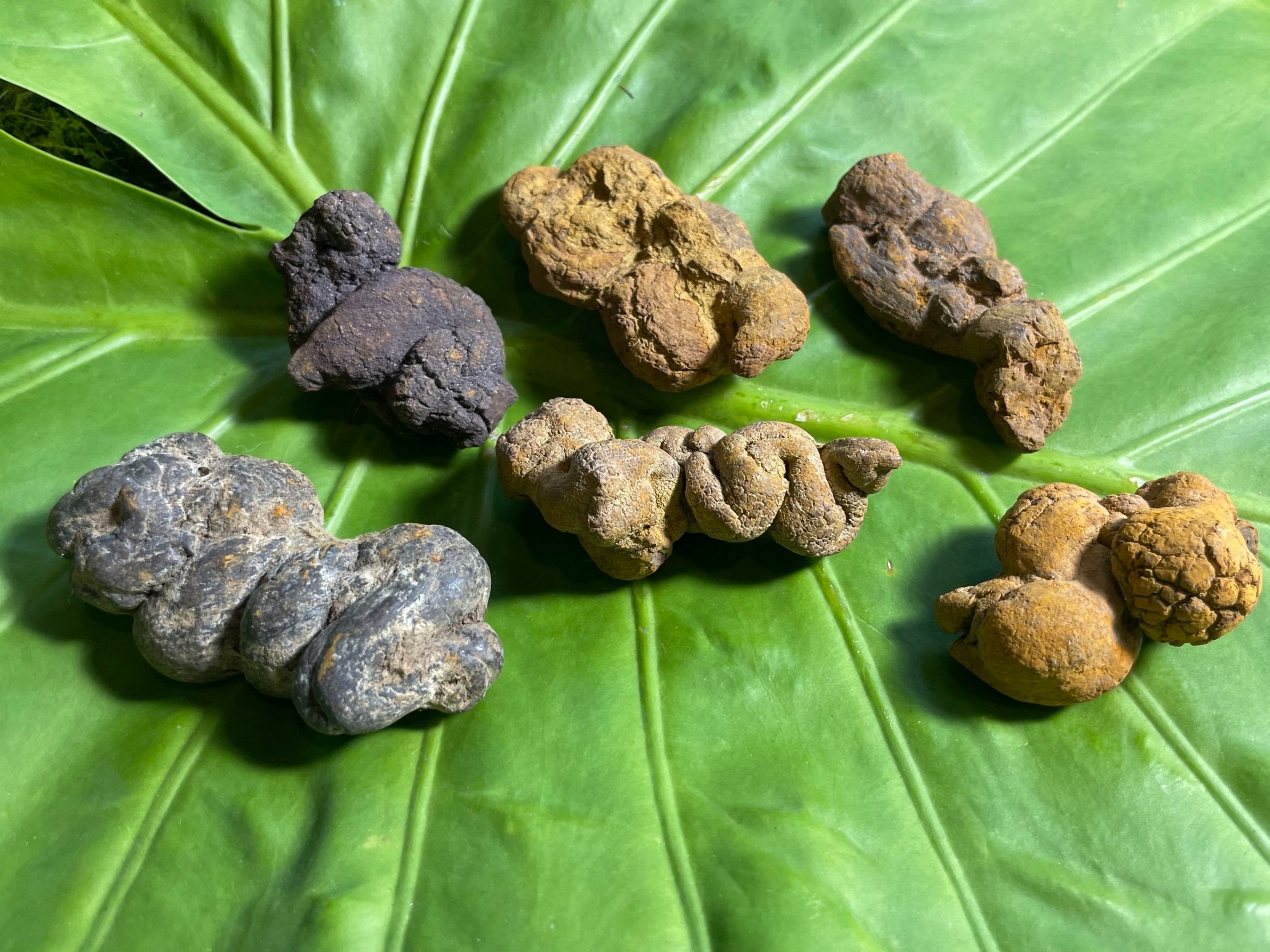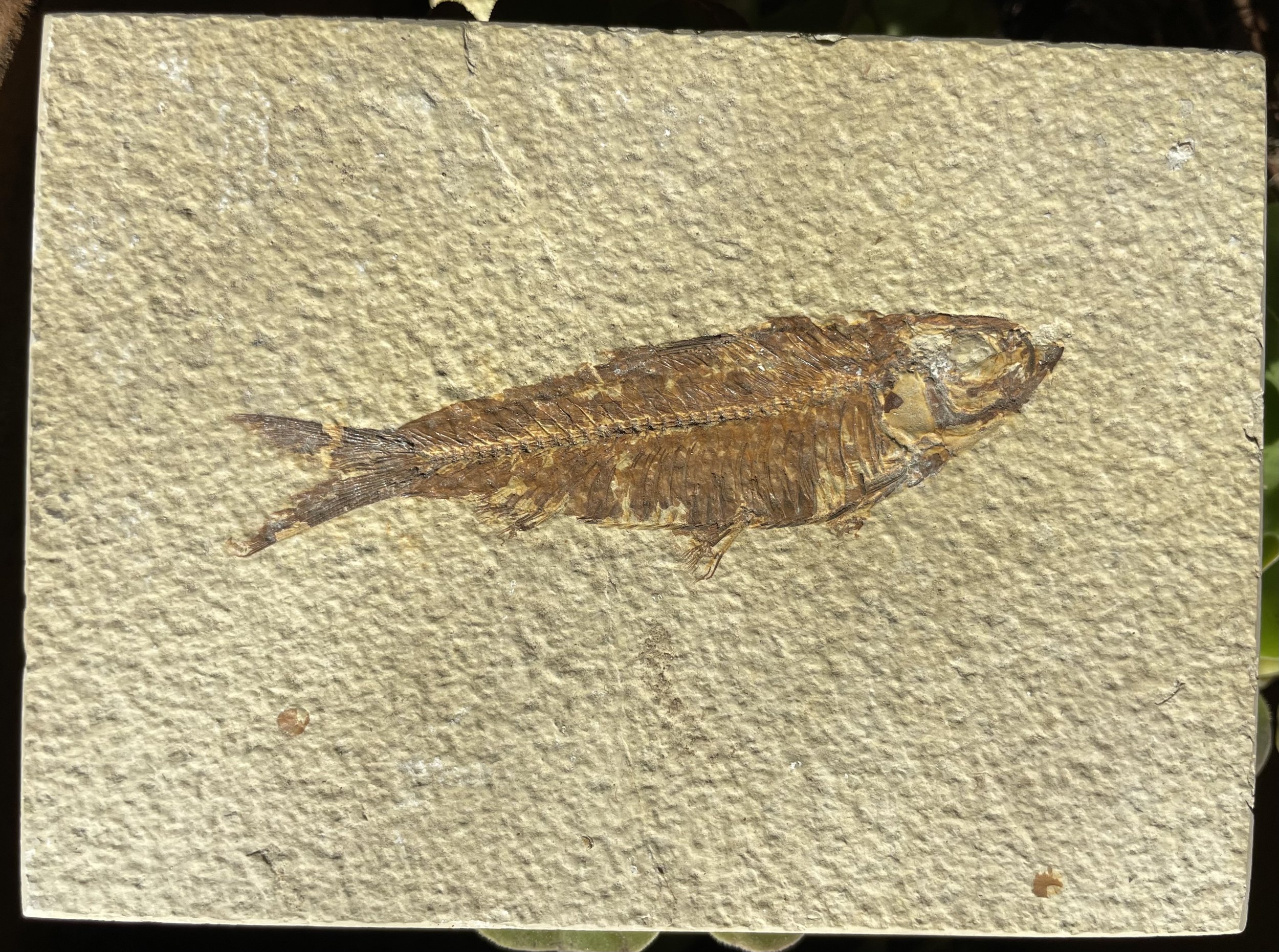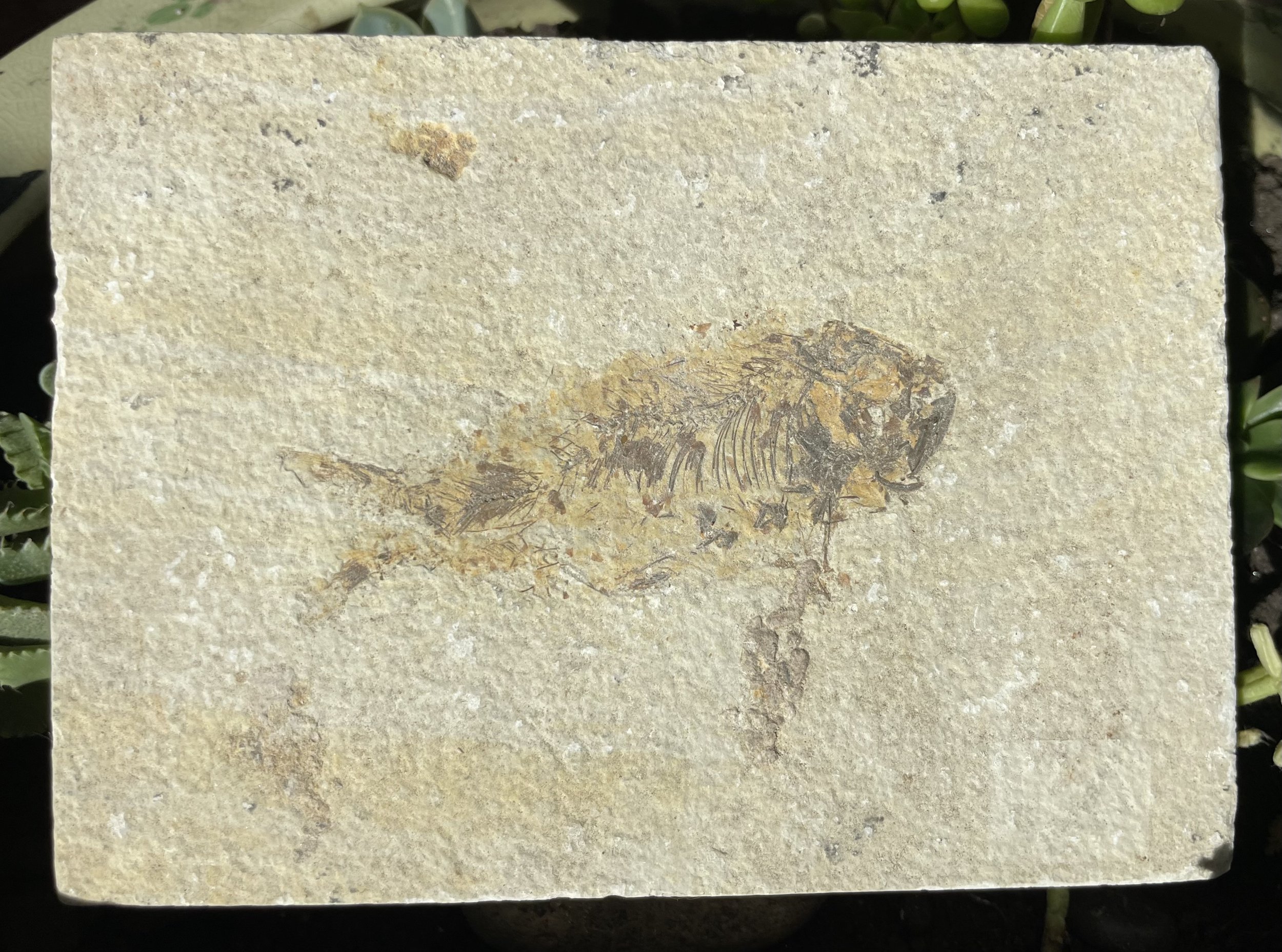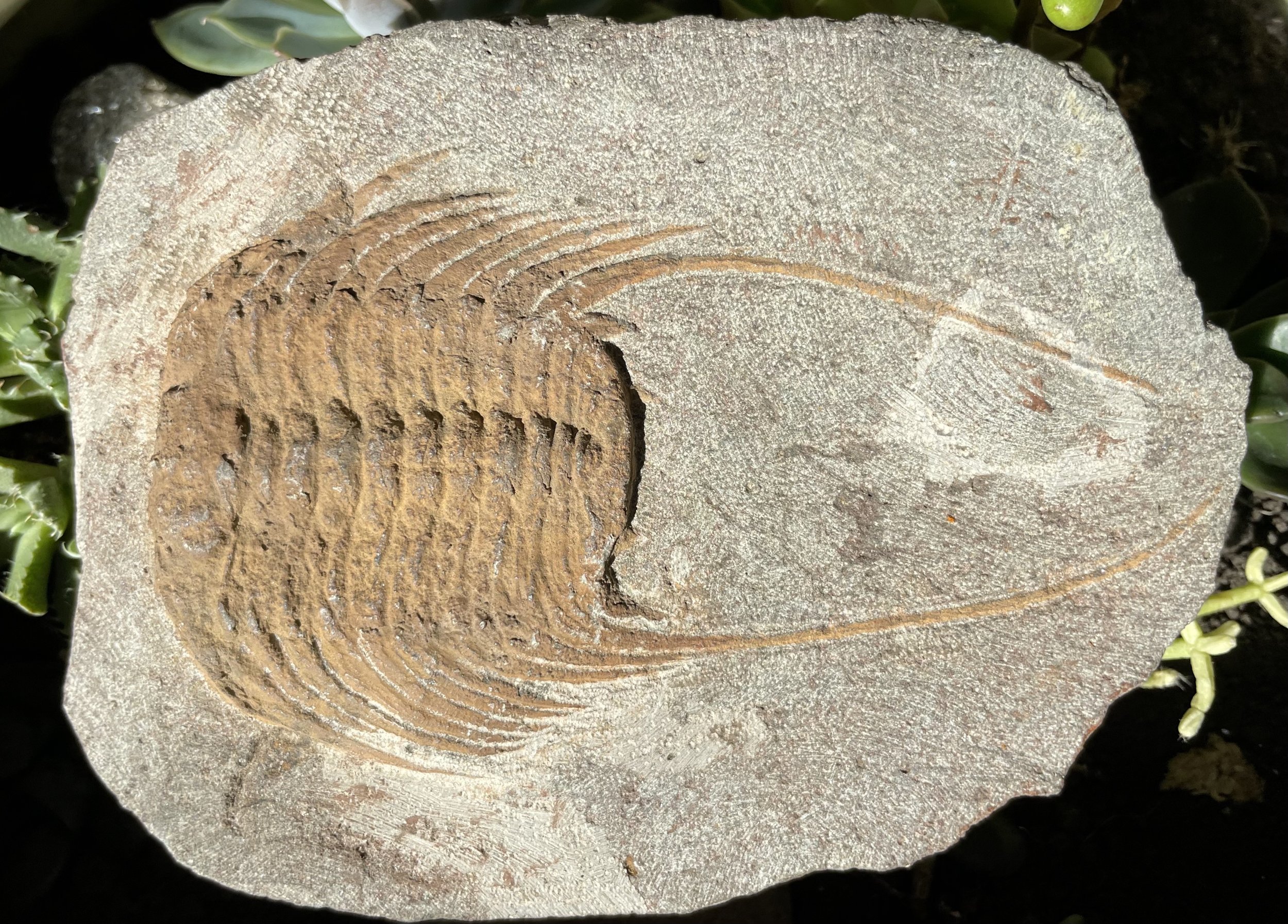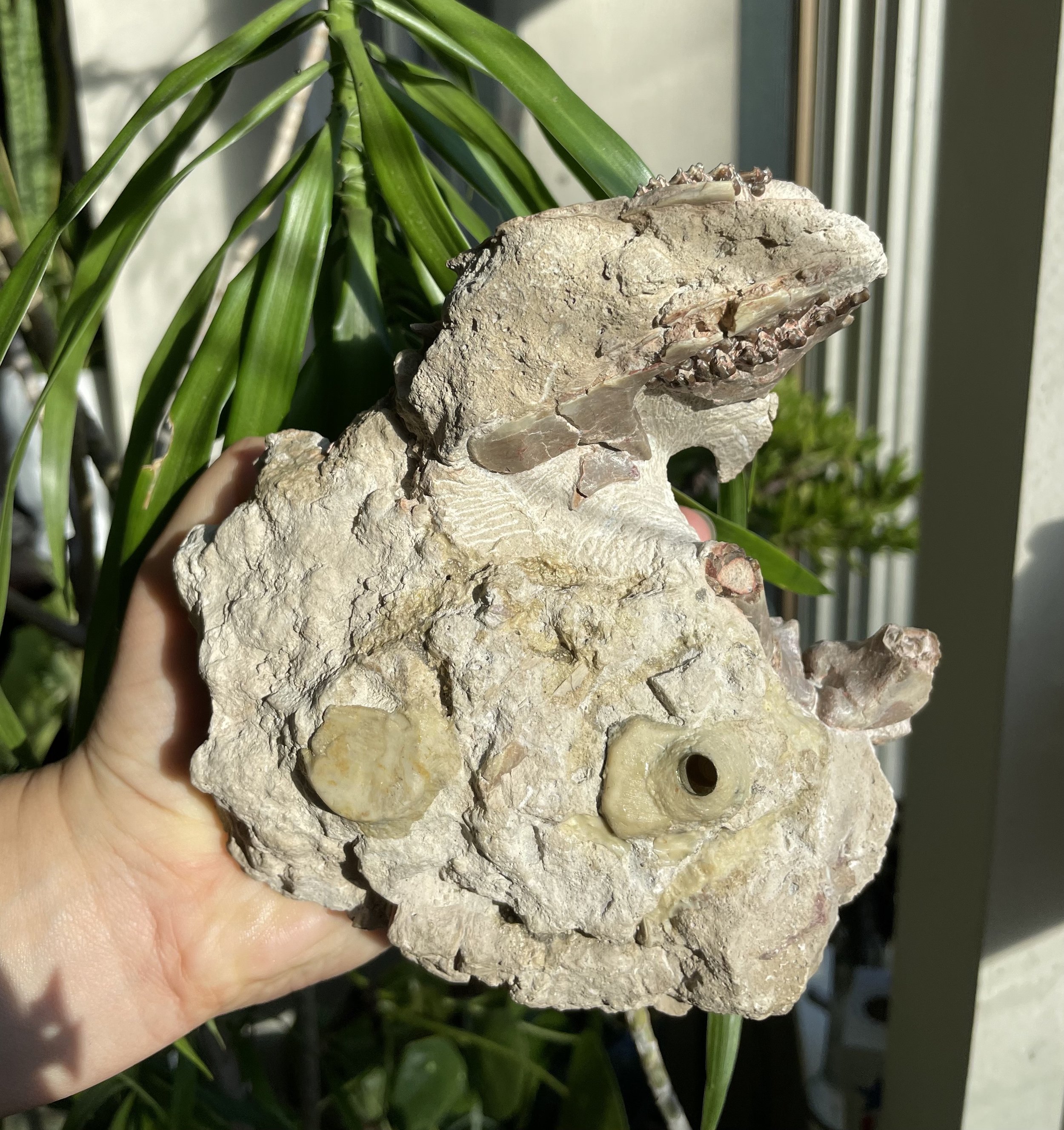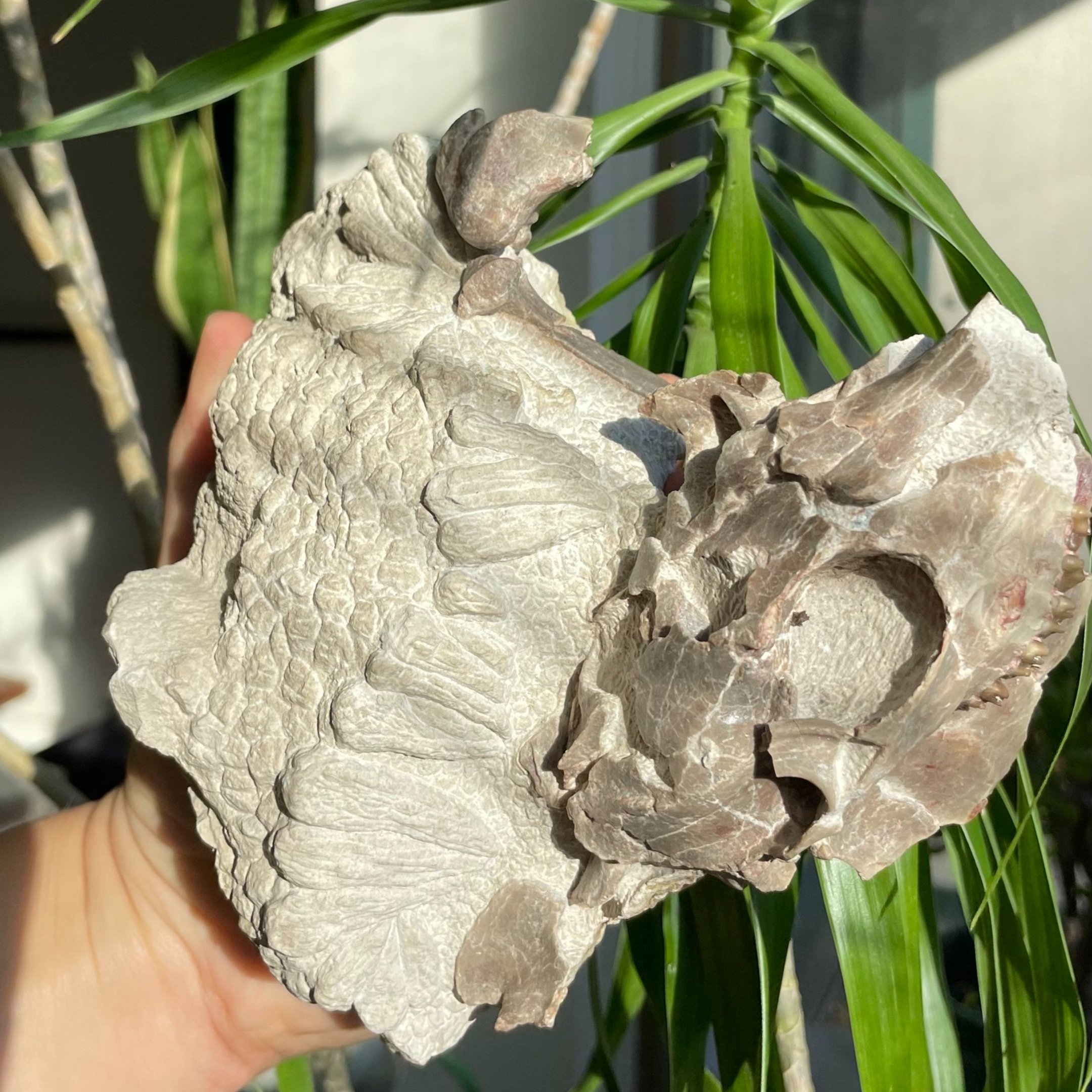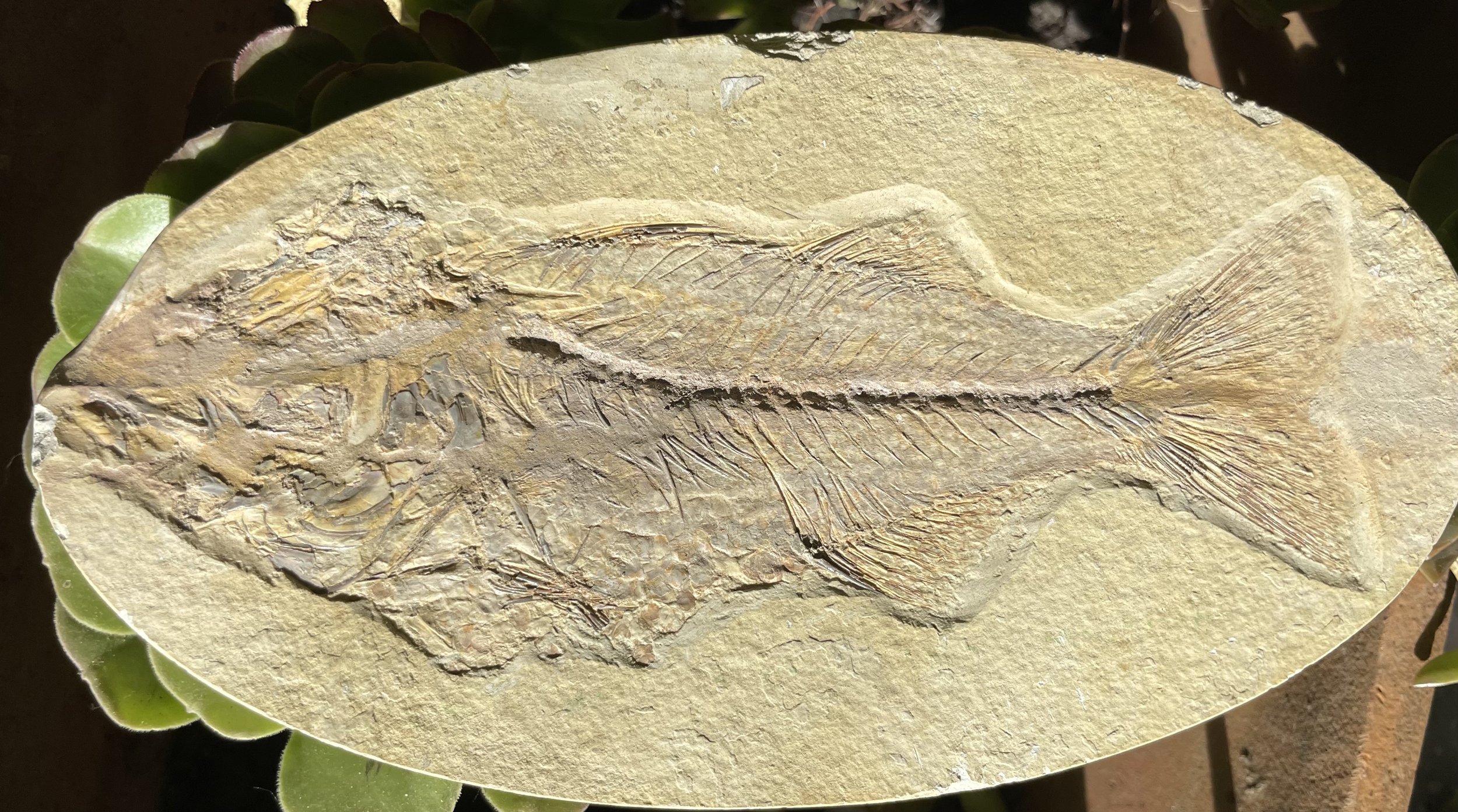Coprolite
This fossilized coprolite from the Morrison Formation in Utah is not just dinosaur poop—it's a time capsule from 150 million years ago! Ranging from 3 to 5 inches in length, these coprolites offer a glimpse into the diets of dinosaurs, with some containing fragments of plants, bones, and even small animals. The Morrison Formation, known for its rich fossil deposits, was home to iconic dinosaurs like Allosaurus and Brachiosaurus. Studying coprolites like this helps paleontologists understand ancient ecosystems, feeding behaviors, and even the digestive processes of prehistoric creatures.
This fossilized coprolite from the Morrison Formation in Utah is not just dinosaur poop—it's a time capsule from 150 million years ago! Ranging from 3 to 5 inches in length, these coprolites offer a glimpse into the diets of dinosaurs, with some containing fragments of plants, bones, and even small animals. The Morrison Formation, known for its rich fossil deposits, was home to iconic dinosaurs like Allosaurus and Brachiosaurus. Studying coprolites like this helps paleontologists understand ancient ecosystems, feeding behaviors, and even the digestive processes of prehistoric creatures.
This fossilized coprolite from the Morrison Formation in Utah is not just dinosaur poop—it's a time capsule from 150 million years ago! Ranging from 3 to 5 inches in length, these coprolites offer a glimpse into the diets of dinosaurs, with some containing fragments of plants, bones, and even small animals. The Morrison Formation, known for its rich fossil deposits, was home to iconic dinosaurs like Allosaurus and Brachiosaurus. Studying coprolites like this helps paleontologists understand ancient ecosystems, feeding behaviors, and even the digestive processes of prehistoric creatures.

